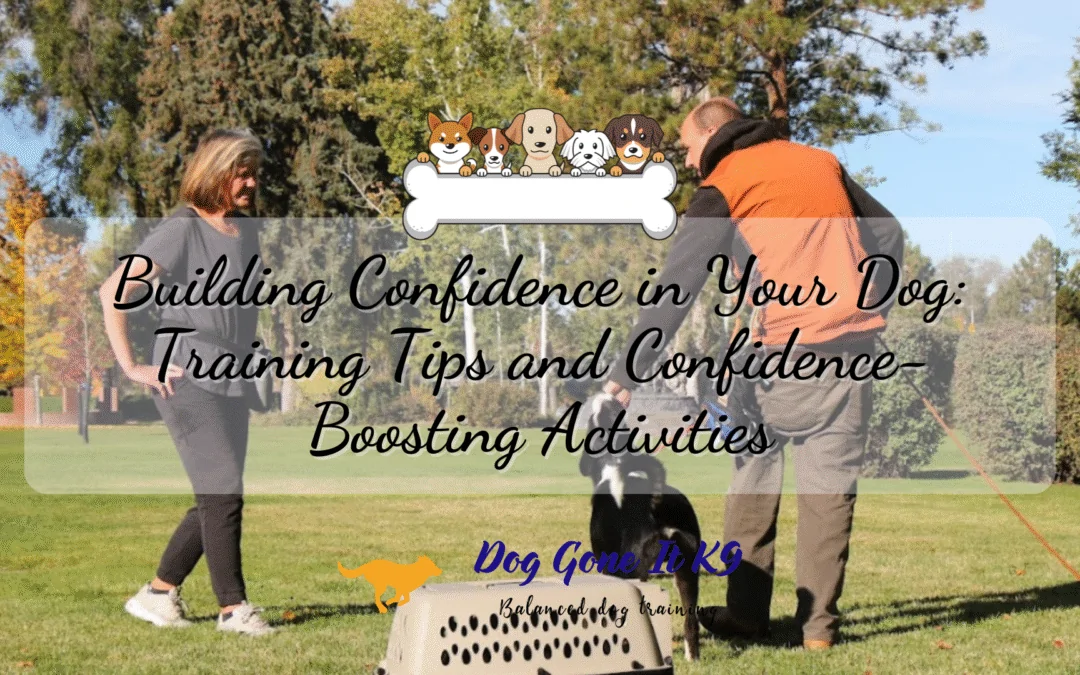Building confidence in your dog is an essential part of ensuring they lead a happy and fulfilling life. Whether you have a playful puppy or a shy adult dog, helping them grow more self-assured through training and supportive activities can make a significant difference. In this guide, we’ll explore effective strategies to build confidence and encourage your dog to thrive in new situations.
Understanding Dog Confidence
Before diving into training techniques, it’s important to understand what confidence looks like in dogs. A confident dog is typically calm, curious, and willing to explore new environments. They bounce back quickly from surprises, handle new experiences with ease, and are less likely to react with fear or aggression.
Signs of a Confident Dog
- Relaxed Body Language – A confident dog usually carries themselves with a loose, easy posture. Look for a wagging tail, soft eyes, ears in a natural position, and even an open mouth as if they’re “smiling.”
- Curiosity – Instead of retreating when faced with something new, confident dogs are eager to sniff, explore, and engage. This curiosity helps them adapt well to different environments.
- Calmness – A confident dog doesn’t overreact to loud noises, new people, or unfamiliar settings. Even if startled, they recover quickly and return to a calm state.
Why Some Dogs Lack Confidence
Not every dog is naturally confident. Factors such as past trauma, lack of socialization during puppyhood, inconsistent handling, or even genetic predispositions can contribute to insecurity. Understanding the root cause helps you tailor your approach, making it easier to build your dog’s self-assurance over time.
Dog Training Basics
Training is a powerful tool for building confidence. It establishes communication between you and your dog, helps them understand expectations, and gives them a sense of accomplishment.
Positive Reinforcement
Positive reinforcement is one of the most effective methods for boosting confidence through training. Instead of focusing on what your dog is doing wrong, you reward the behaviors you want to see more of.
- Use Treats and Toys – High-value treats (like small pieces of chicken or cheese) or favorite toys can motivate your dog to engage enthusiastically with training.
- Consistency is Key – Stick with the same commands, tone of voice, and reward system. Consistency makes it easier for your dog to succeed and trust the process.
- Patience and Praise – Celebrate small wins. Even if your dog doesn’t get it right the first time, your encouragement teaches them that trying is safe and rewarding.
Confidence Building Exercises
Socialization
Exposure to new environments, people, and other animals is crucial for developing confidence. Socialization helps your dog learn that the world is full of opportunities rather than threats.
- Puppy Socialization Window – The ideal period for socialization is between 3 to 14 weeks of age. Puppies exposed to positive experiences during this time are more likely to grow into confident adults.
- Controlled Introductions – If your dog is older or nervous, go slowly. Introduce them to new people, animals, or places at their pace. Keep the encounters positive with treats, praise, and lots of encouragement.
Obedience Training
Teaching your dog basic commands like sit, stay, or come builds structure, predictability, and trust.
- Functional Commands – Use commands in everyday life. For example, ask for a “sit” before putting down their food bowl or a “stay” before opening the door. This gives your dog a sense of control and confidence.
- Regular Training Sessions – Keep sessions short (5–10 minutes) but frequent. Dogs learn best with repetition in small doses, making training fun and stress-free.
Overcoming Insecurity
If your dog struggles with insecurity, additional strategies can help them feel more secure.
- Identifying Triggers – Watch your dog closely to spot what makes them uneasy. It could be specific noises, unfamiliar people, or certain environments.
- Gradual Desensitization – Slowly and gently expose your dog to their triggers in a safe, controlled way. Pair the exposure with treats and praise to build positive associations.
- Professional Help – If your dog’s anxiety or lack of confidence is severe, consider working with a professional dog trainer or behaviorist who can design a personalized plan.
Building confidence in your dog takes time, patience, and the right training approach — but the rewards are worth it. A confident dog is happier, healthier, and more adaptable in everyday life.
At Dog Gone It K9, we specialize in helping dogs of all temperaments build confidence and overcome insecurities. Whether through obedience training, socialization support, or custom one-on-one sessions, our team is here to guide you every step of the way.
👉 Contact Dog Gone It K9 today and let’s help your dog become the calm, confident companion you’ve always envisioned.

